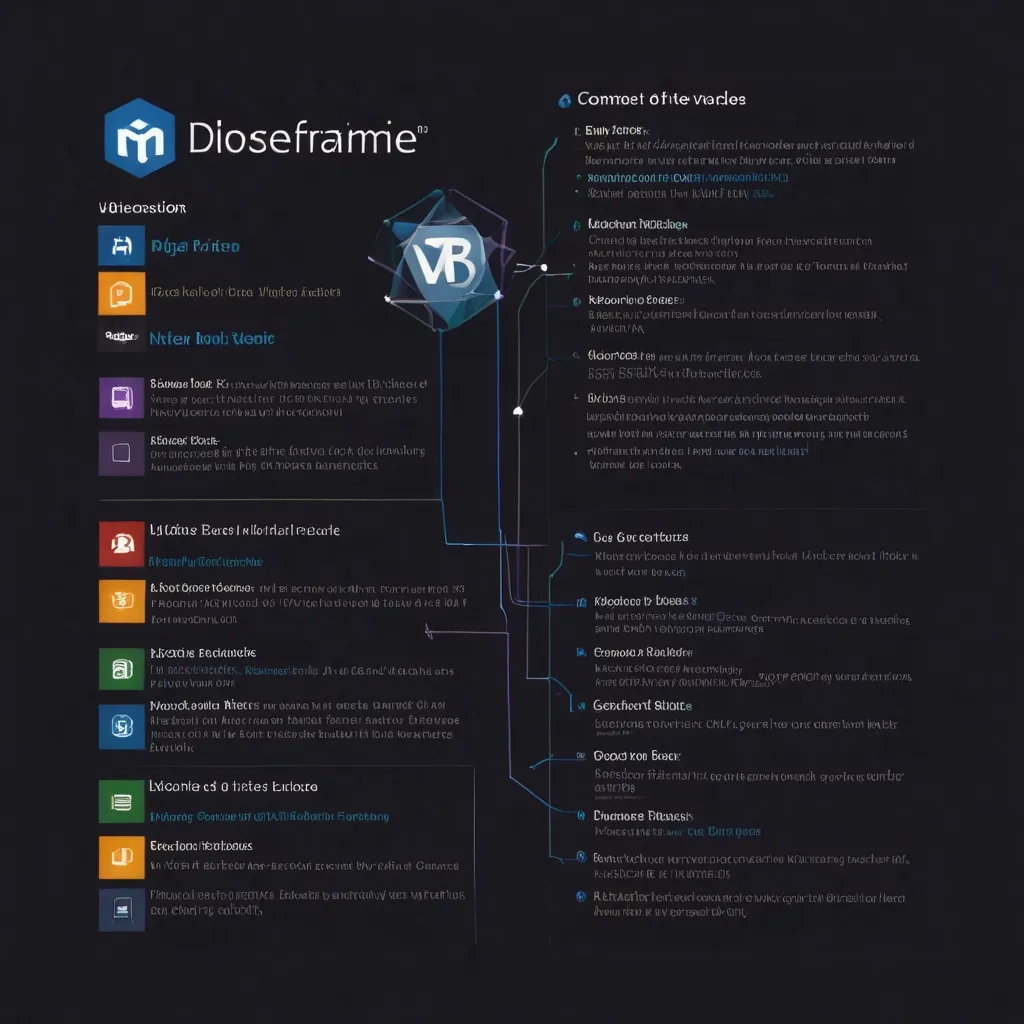Let’s dive into the world of VB.NET—a powerful and versatile programming language developed by the tech giant Microsoft. VB.NET made its grand debut way back in 2002, arriving as a significant evolution from its predecessor, the classic Visual Basic. This transition to the .NET Framework wasn’t just a superficial update; it marked the birth of an entirely new, fully object-oriented language designed for enhanced performance and reliability.
VB.NET stepped up as the successor to Visual Basic 6.0, which was the last installment of the classic Visual Basic series. The initial release, VB.NET 7.0, was nestled within the .NET Framework 1.0. Following versions like VB.NET 7.1 and VB.NET 8.0 came along, with VB.NET 8.0 eventually dropping the “.NET” suffix to simply be called Visual Basic 2005. This shift was key in marking a clear distinction from the classic version.
One of the many cool things about VB.NET is its multi-paradigm nature. This basically means it supports a variety of programming styles, including structured, imperative, object-oriented, declarative, generic, reflective, and event-driven programming. This flexibility is a huge plus for developers who face a plethora of different tasks. VB.NET is designed to be easy to learn and use, with a syntax that closely resembles English—making it not only easy to read but also to write.
Speaking of types, VB.NET is strongly typed. Essentially, this means it performs type checking at compile time, which helps ensure your code runs as smoothly and as correctly as possible. But here’s the kicker: it also supports loose typing, where type checking happens at runtime. This feature is super handy for those spur-of-the-moment, rapid prototyping phases.
The versatility of VB.NET is further magnified by its compatibility across various platforms. Running on the .NET Framework, Mono, and .NET Core, it can operate on a wide array of operating systems like Windows, Android, BSD, iOS, Linux, macOS, Solaris, and Unix. This cross-platform capability allows developers to write software that can seamlessly run in multiple environments, which is a huge plus in today’s diverse tech landscape.
VB.NET excels in building Windows applications, especially graphical user interfaces (GUIs). It’s a favorite for crafting web applications, server-side scripting programs, and even console applications. Thanks to its user-friendly nature and rapid application development capabilities, VB.NET is a go-to for internal systems, inventory management tools, data collection apps, and database access applications.
Ever chatted with a chatbot while browsing a website? There’s a good chance that VB.NET might be the hidden hero behind the scenes. Its seamless integration with other .NET languages and libraries makes it a potent tool for building messaging platforms, small-scale social media networks, order processing applications, and logistics management systems.
Microsoft has got the VB.NET developers covered with its robust development tools. Visual Studio and Visual Basic Express are popular integrated development environments (IDEs) that offer a slew of features to make the designing, developing, and debugging processes as smooth as butter. The graphical interface within these IDEs lets developers drag and drop components, resize menus, and create visual elements effortlessly, speeding up the entire development process.
Now, comparing classic Visual Basic with VB.NET reveals a bit of a generational shift. Classic Visual Basic was object-based and ran on a deterministic, reference-counted engine based on COM. On the other hand, VB.NET is fully object-oriented and backed by the .NET Framework, including the Common Language Runtime (CLR) and its extensive class library. This shift required developers to refactor their applications to harness the new language’s full power.
For example, data types in VB.NET saw a change—the Integer type is now 32 bits instead of 16, and the Long type has jumped to 64 bits from 32. Other enhancements like structured exception handling and short-circuited expressions showcase the robust capabilities VB.NET brings to the table.
Fast forward to 2023, and Microsoft is still going strong with its commitment to supporting VB.NET. The language is stable and continues to benefit from improvements in the .NET runtime and libraries. While it might not be stretched to new workloads, it’s here to stay, especially in traditional Windows-based client workloads where it has long been a crowd favorite.
All in all, VB.NET has proved to be a versatile, robust, and widely-used programming language that has grown leaps and bounds since its classic days. Thanks to its ease of use, comprehensive features, and compatibility with various platforms, it remains an excellent choice for developers working on everything from GUI-based Windows applications to web and server-side scripting programs. As the .NET ecosystem keeps growing, VB.NET holds its ground as a valuable tool for developers worldwide.
There you have it—a snapshot of VB.NET in its current glory and a nod to its rich history. Whether you’re a seasoned coder or just dipping your toes into programming waters, VB.NET offers something valuable for everyone.






